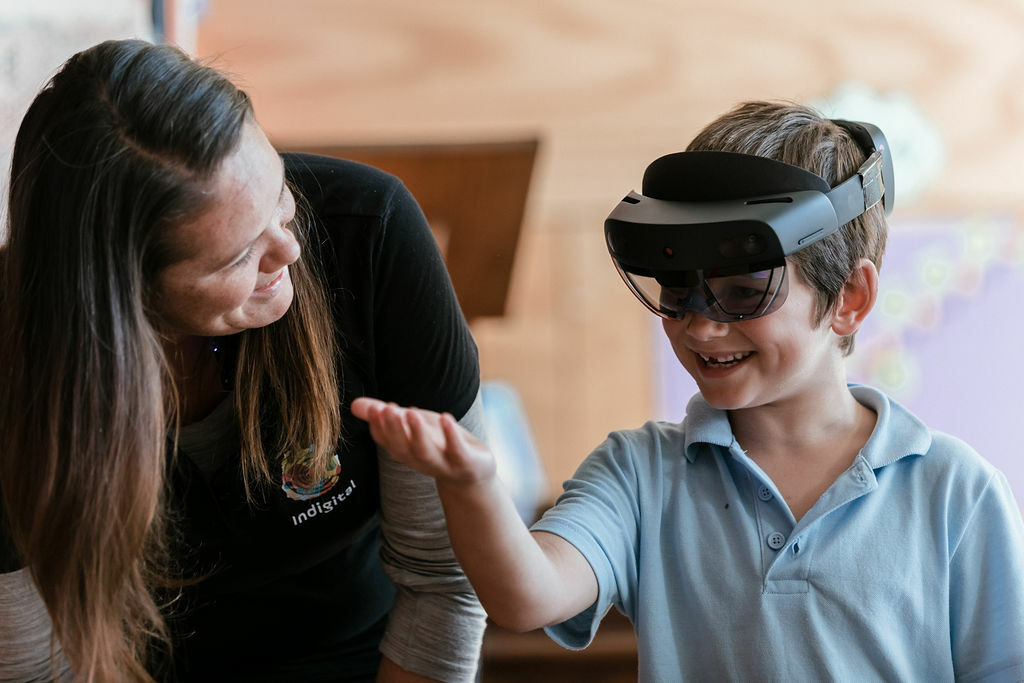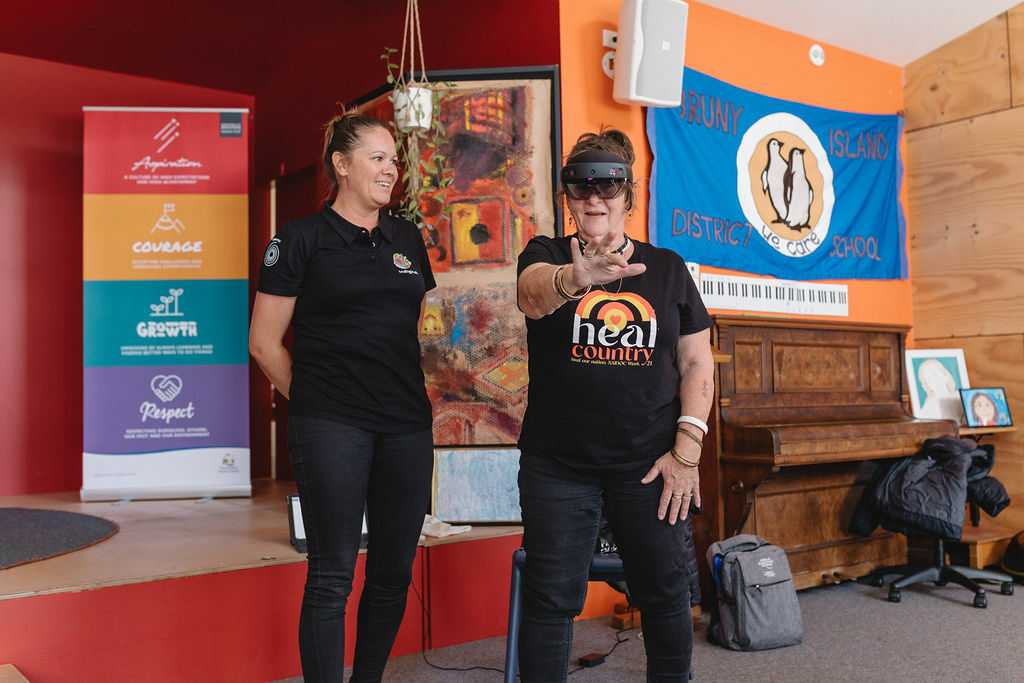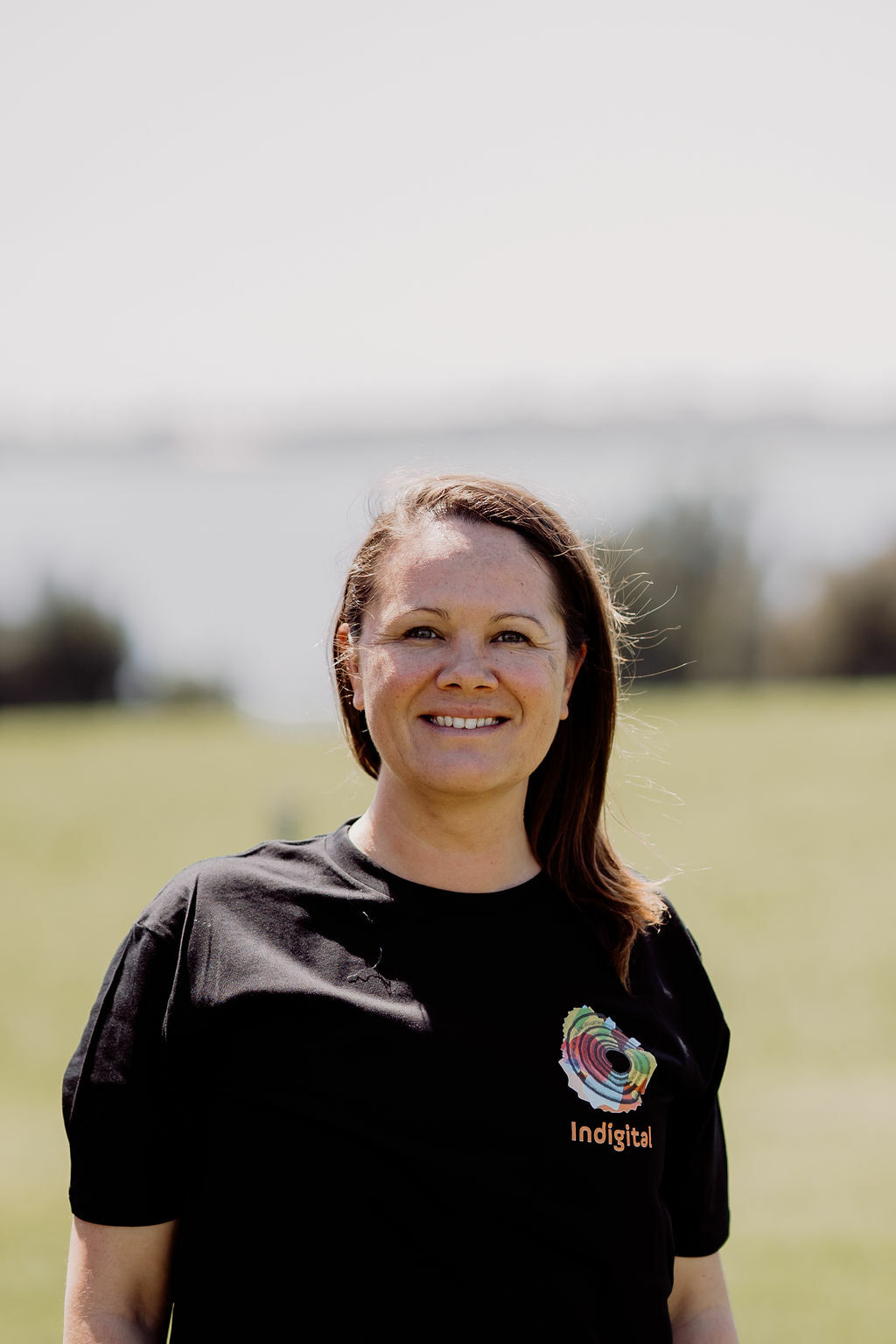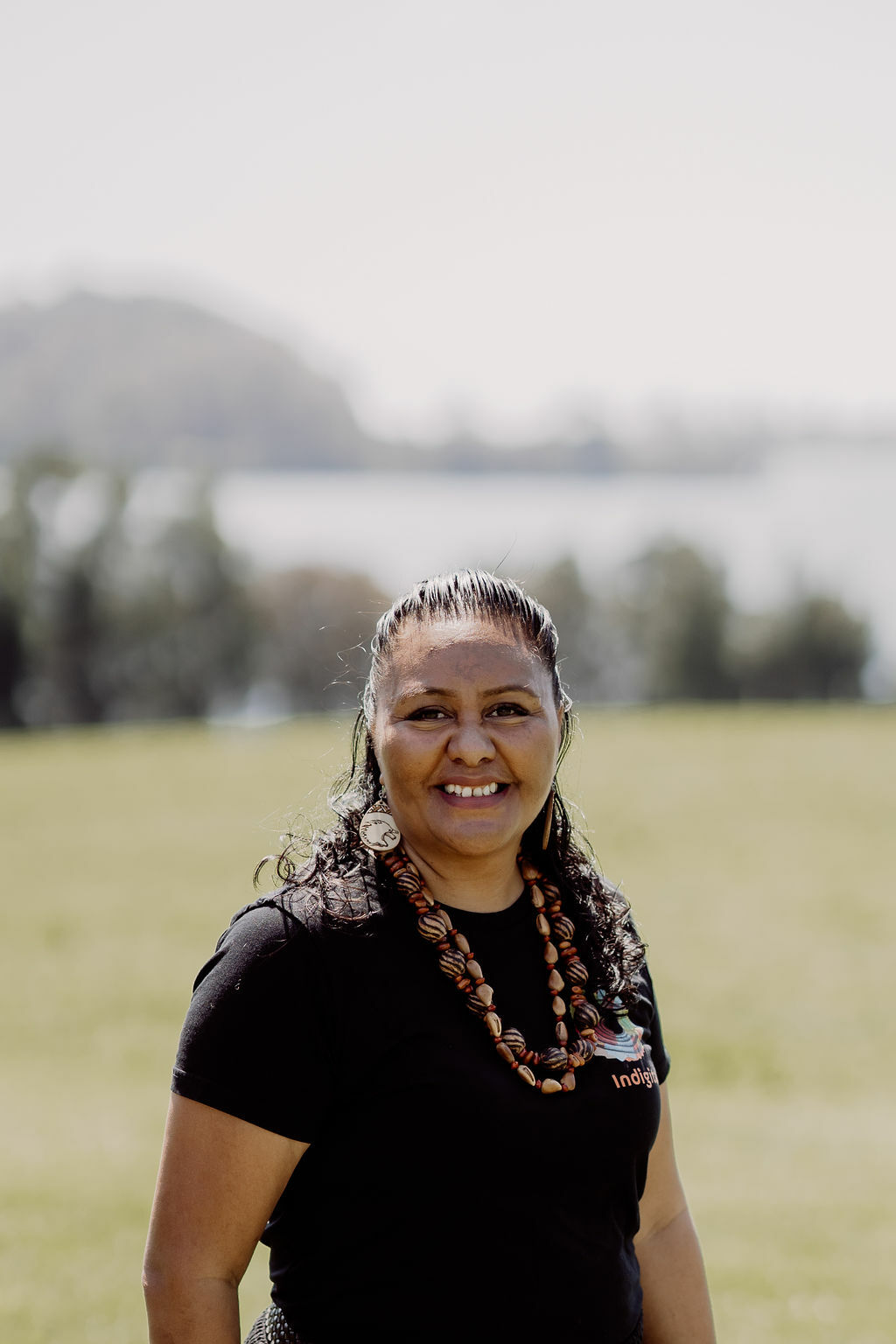
NAIDOC Week (2nd July - 9th July annually) is a week to honour, pay our respects, and celebrate First Nations voices, culture, and connection to country. This year’s theme is For Our Elders, recognising the deep connection to First Nations history and culture sits with elders and their stories, cultural knowledge and traditions.
We connected with Mikaela Jade, a proud Caborogal woman from the Georges River in Sydney, and Tiare Kelsall, who respectively are the Founder and Delivery Manager of Australia’s first Indigenous edu-tech company ‘Indigital’. Through their work, Indigital’s mission is to use the tools of today to honour and continue connection to elders and culture for the next generation.
Hey Mikaela, it’s so great to chat with you. We’d love to ask you, what experiences and ideas sparked the development of Indigital?
Mikaela Jade:
I am a proud Caborogal woman from the Georges River in Sydney. The idea to use virtual and augmented reality to tell First Nations stories came to me over 10 years ago when I was working as a park ranger. As part of this role, we put metal aluminum signs in the ground in front of cultural places of great significance to the community that live there, and whose country it was. My heart broke when the majority of the time, the signs only said things like “this is an Aboriginal site”, not incorporating any traditional perspectives at all.
In 2012, I witnessed the use of augmented reality at a University event, and this sparked the idea that overtime developed what Indigital is today: “What if we could use this technology where instead of reading a sign when you go to a place, couldn’t you just put your phone up and an elder could appear in holographic format and tell you the right story, for the right reasons, in the right language, at the right place, at the right time?”
Two years later, with this question as the driving mission, I launched Indigital - Australia’s first Indigenous edu-tech company. Our flagship program, Indigital Schools, is a program for teachers and students in which they meaningfully connect with and learn from local Elders as they collaboratively develop digital skills for the future.
The aim of Indigital is to empower First Nations Australians in the use of digital technologies, and to share the ancient cultural knowledge and history of Australia with audiences in new and engaging ways. I come from the original scientists and engineers who have more than 80,000 years of cultural knowledge in our sciences to bring to the table. We already have the world’s oldest living cultures, we already have knowledge systems about environment, about ecosystems, about systems, which is basically what technology is – we are already scientists, even though it’s not recognised through a qualification.

Can you tell us about how Indigital is connecting technology and culture?
Indigital Schools , is our flagship program and the only program in Australia that marries Indigenous cultural knowledge, language and lore with frontier technology education. The eight curriculum-linked workshops in the program share Indigenous-designed digital skills training built around providing the opportunity for our story and language custodians to share their cultural knowledge with the younger generation in a respectful environment.
Our program is grounded in cultural storytelling. The essential element of the program is that the school connects with a First Nations Elder from their community to share stories, language, and cultural knowledge either in person or through our online video library. This story is then brought to life by the students using technology, including creating animated characters and stories using Minecraft Education Edition and 3D modelling software. Their creations are uploaded into the Indigital platform and shared with friends and family through animated 3D Augmented Reality.
Tiare Kelsall: Through our work we reflect and ask how we can best honour, teach and connect our elders, educators and young people through technology.
“Our elders ask, how do I bring my stories to kids?
Our educators ask, how do we bring our Elders in and connect with First Nations culture?
And our kids ask, can we just play with technology?"
And so, we designed our Indigital Schools program to merge and solve all three requests.

‘For Our Elders’ is this year’s theme for NAIDOC Week, how does this theme connect with your work?
“For our Elders” connects with the core of our work and mission at Indigital. Elders and their stories are the centre of our Indigital Schools program. Tiare explains more below:
Tiare Kelsall: “Without Elder stories and meaningful community engagement, Indigital Schools would be just another Minecraft tech program. At Indigital, we’ve made this the cornerstone of what we do. Country is at the heart of everything.”
"Country is at the heart of everything."
“We just recently had Aunty Linda Loo (Noongar woman born in Corrigin, connected to the Balladong/Whadjuk clans of Noongar Nation) participate in our program. During the storytelling, she got quite nervous and kept asking me, what do you think? … But by the end of the first day, she's like, there is something magic about allowing us to tell the story. And I said, what is that, Auntie? She said, I have to check myself, to check-in with my ancestors to ask them if I'm doing it correctly … So for our elders, we might see the living elders walking around, but it is important to understand our elders also check-in with their own elders and go, is this how Auntie told me? Is this how Uncle told me? So the process of working with our elders empowers our elders to check-in with their own. That's beautiful.”
The importance of Indigenous Cultural Intellectual Property (ICIP) & Elder Code of Care
The NAIDOC theme is also very important to us as it ties into a foundational principal of our work - Indigenous Cultural Intellectual Property (ICIP). This refers to the collective rights of Indigenous peoples to their cultural heritage, which encompasses a wide range of tangible and intangible forms of expression, such as artistic works, literature, music, dance, performance, languages, traditional knowledge, genetic resources, cultural property, and documentation of Indigenous people and culture. These cultural expressions are not just mere artifacts or products of creative activity but are inextricably linked to the cultural identity, spirituality, and sovereignty of Indigenous communities. They are passed down from one generation to the next, embodying traditional knowledge, values, and practices that have evolved over thousands of years.
At Indigital, this principal is taught to educators and those we partner with. It also ties into our Elder Code of Care policy that forms part of our program. This code is based on the values and traditions of First Nations communities and is intended to promote positive relationships between Elders and those seeking to work with them. Principles of this code include respect, listening, patience, honesty, cultural sensitivity, collaboration, gratitude, and value.
To elaborate on value, we teach educators and empower elders to recognise that Elders are experts in their field and need to be renumerated in the same way as other professionals. This means paying Elders a market rate for their time with cash, not gift certificates or other forms of 'payment' that diminish their expertise.
Tiare Kelsall: “Elders are custodians of the story and must be compensated as experts in their field.”
We love how you connect the rich history and culture of First Nations Elders through digital storytelling for young people to learn and connect with. What are your hopes as to how young people (including non-Indigenous Australians) can connect with Indigital's purpose and meaningfully honour our Elders?
Tiare Kelsall: “We hope that our youth turn away from the screens and turn more towards the Elders in regards to them being the experts in that space.”
“The youth might find basic history on Google, but they don't find the purpose of it. Unless they have our elders there as well. So one of my hopes is that they actually start looking away from screens, and get the information first-hand from Elders and their stories, rather than information that has been passed down by many hands on a Google search by people who were not there first hand and experiencing it in real-time. A lot of our information, cultural information, hasn't been asked or recorded…. So some of our own processes are lost amongst translation because we actually haven't published it. So another hope in young people connecting with elders is that they might record our stories - our younger generation makes sure that they are recorded correctly on these devices and in technology and on all these different programs… based on firsthand experiences of hearing and listening to elders.”
“The youth might find basic history on Google, but they don't find the purpose of it. Unless they have our elders there as well."
How would you encourage educators, parents and guardians to support this learning and connection with Indigital and First Nations culture?
As part of our Indigital Schools program, educators are required to actively engage and connect with local traditional owners and Elders, and their culture. Tiare explains below how we teach educators to do this respectfully as part of our program:
Tiare Kelsall: “We try to encourage educators to have an open dialogue and true yarn with their First Nations Elders in order to build a trusting relationship. So it’s not just calling up and asking, “Hey, want to do this …?”, but rather “Hey, if you’ve got the chance, I’d love to have a yarn with you about your story…” So instead of talking over or talking at, we are talking with and working with our Elders.

Mikaela Jade, Indigital Founder, Cabrogal woman of the Dharug-speaking Nation of Sydney

Tiare Kelsall, Indigital Delivery Manager, skin tied to Nhanda Yamatji